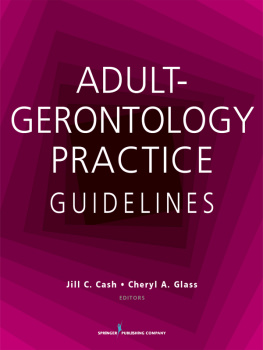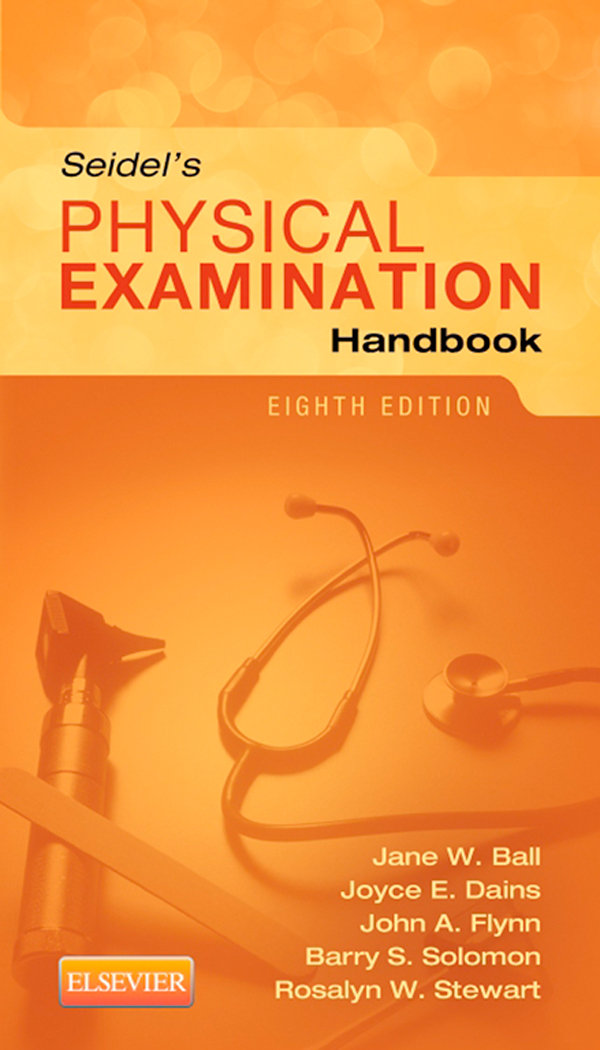CDC Growth Charts
Children and adolescents 2 to 20 years (5th-95th percentile)
Boys Stature-for-age and Weight-for-age
Boys BMI-for-age
Girls Stature-for-age and Weight-for-age
Girls BMI-for-age
Optional Charts (5th-95th percentile)
Boys Weight-for-stature
Girls Weight-for-stature
Copyright

3251 Riverport Lane
St. Louis, Missouri 63043
SEIDELS PHYSICAL EXAMINATION HANDBOOK ISBN: 978-0-323-16953-0
Copyright 2015 by Mosby, an imprint of Elsevier Inc.
Copyright 2011, 2006, 2003, 1999, 1995, 1991, 1987 by Mosby, Inc., an affiliate of Elsevier Inc.
No part of this publication may be reproduced or transmitted in any form or by any means, electronic or mechanical, including photocopying, recording, or any information storage and retrieval system, without permission in writing from the publisher. Details on how to seek permission, further information about the Publishers permissions policies and our arrangements with organizations such as the Copyright Clearance Center and the Copyright Licensing Agency, can be found at our website: www.elsevier.com/permissions.
This book and the individual contributions contained in it are protected under copyright by the Publisher (other than as may be noted herein).
Notices
Knowledge and best practice in this field are constantly changing. As new research and experience broaden our understanding, changes in research methods, professional practices, or medical treatment may become necessary.
Practitioners and researchers must always rely on their own experience and knowledge in evaluating and using any information, methods, compounds, or experiments described herein. In using such information or methods, they should be mindful of their own safety and the safety of others, including parties for whom they have a professional responsibility.
With respect to any drug or pharmaceutical products identified, readers are advised to check the most current information provided (i) on procedures featured or (ii) by the manufacturer of each product to be administered to verify the recommended dose or formula, the method and duration of administration, and contraindications.
It is the responsibility of practitioners, relying on their own experience and knowledge of their patients, to make diagnoses, to determine dosages and the best treatment for each individual patient, and to take all appropriate safety precautions.
To the fullest extent of the law, neither the Publisher nor the authors, contributors, or editors, assume any liability for any injury and/or damage to persons or property as a matter of products liability, negligence or otherwise, or from any use or operation of any methods, products, instructions, or ideas contained in the material herein.
International Standard Book Number: 978-0-323-16953-0
Executive Content Strategist: Kristin Geen
Content Manager: Jamie Randall
Associate Content Development Specialist: Melissa Rawe
Publishing Services Manager: Deborah L. Vogel
Project Manager: Pat Costigan
Designer: Paula Catalano
Printed in the United States of America
Last digit is the print number: 9 8 7 6 5 4 3 2 1

Preface
Seidels Physical Examination Handbook, eighth edition, is a portable clinical reference on physical examination that is suitable for students of nursing, medicine, chiropractic, osteopathic, and other allied health disciplines, as well as for practicing health care providers. It offers brief descriptions of examination techniques and guidelines on how the examination should proceed, step by step. This handbook is intended to be an aid to review and recall the procedures of physical examination. Because of its brevity specific techniques of history taking by organ system are not described.
The handbook begins with an outline of what information should be obtained for the patients medical history and review of systems. Subsequent chapters for each of the body systems list equipment needed to perform the examination and present the techniques to be used. Expected and Unexpected Findings follow the description of each technique, presented in distinctive color type for easy recognition. Numerous illustrations interspersed throughout the text reinforce techniques and possible findings. Pediatric examination variations are highlighted in each body systems chapter.
Each chapter offers Aids to Differential Diagnosis and also provides Sample Documentation, which is focused on a specific patient concern to illustrate good documentation practice. Subjective Data and Objective Data are clearly differentiated for each abnormality in the Aids to Differential Diagnosis section of each chapter in the eighth edition.
As in previous editions, separate chapters give an overview of the entire examination for all adults; for infants, children, and adolescents; for older adults; and for healthy females. The final chapter gives guidelines for Reporting and Recording findings.
New chapters in this edition detail the assessment of Vital Signs and Pain, an overview of the older adult examination, and an evaluation for sports participation.
Jane W. Ball
Joyce E. Dains








